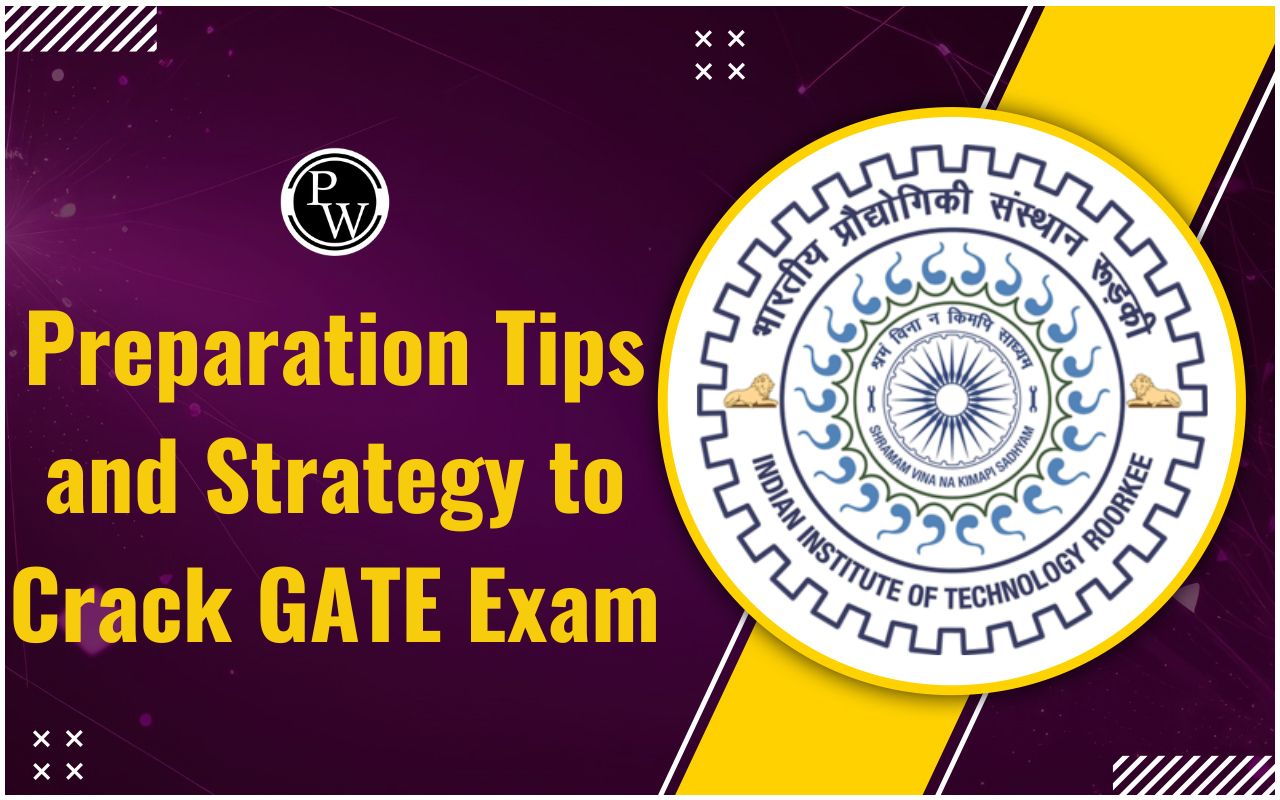CBSE Class 10 Science Notes Chapter 13 Magnetic Effects of Electric Current

The CBSE Class 10 Science syllabus includes Chapter 13, Magnetic Effects of Electric Current. A fundamental topic that builds a solid foundation in electromagnetism. This chapter is not only crucial for board exams but also introduces principles that explain the working of everyday devices like electric motors, generators, and electromagnetic relays. These detailed notes aim to help students dive deeper into the topic while also serving as a quick revision tool before exams.
Check out: CBSE Class 10th Sample Papers
CBSE Class 10 Science Notes Chapter 13 Magnetic Effects of Electric Current- Overview
Class 10 Magnetic Effects of Electric Current notes are available to help students who are struggling to understand the magnetic effects of electric current or who want to do well on their CBSE Class 10 Board Exams.
Magnetic Effect of Electric Current Class 10 Notes
The magnetic effect of electric current class 10th notes cover the basic concepts of Magnetic field electricity and how the magnetic effect of electric current is applied to electromagnets and electric motors is examined in the chapter.
Magnetic Field and Field Lines
Magnet
A magnet is a material that creates a field capable of attracting or repelling other materials with magnetic properties. For instance, lodestone, a naturally occurring magnet, can draw in substances like iron, nickel, and cobalt.
Magnets always have two poles, known as the north and south poles, which cannot be separated. When a magnet is freely suspended, its north pole naturally aligns with the Earth’s geographic north. Similar to electric charges, magnetic poles follow the principle of attraction and repulsion. Like poles repel each other, while opposite poles attract.
Bar Magnet
A bar magnet is a solid, typically rectangular object made of materials like iron, steel, or other ferromagnetic substances, possessing inherent magnetic properties. It exhibits two distinct poles: a north pole and a south pole. When suspended freely, the north pole of the magnet naturally aligns itself with the geographic north pole of the Earth.
Imagine you have a bar magnet made of iron. It’s a solid rectangle with two ends: one is the north pole, and the other is the south pole. When freely suspended, the north pole always points towards the Earth’s north pole. This alignment is vital for navigation, as seen in magnetic compasses. The bar magnet’s behavior showcases its innate magnetic properties and its distinctive north and south poles.
Magnetic Field
Think of a magnetic field like an invisible force field surrounding a magnet. It’s what makes magnets attract or repel other objects. Picture it like the force you feel when you bring two magnets close together. This force extends around the magnet and affects nearby objects. So, when we talk about a magnetic field, we’re talking about this invisible area around a magnet where its power can be felt.
Magnetic Field Lines
Magnetic effect of electric current notes class 10th is all about line that disperse around the magnet. Magnetic field lines are like invisible paths that show us where the magnetic force is strongest around a magnet. They’re kind of like the lines you see on a map that tells you where roads or rivers are.
When we draw magnetic field lines, we’re tracing the invisible lines of force that come out of the north pole of a magnet and go into the south pole. These lines help us understand how magnets work and how their force spreads out in space.
So, just like how you can follow lines on a map to get from one place to another, magnetic field lines show us the way magnetic force flows around a magnet.
Magnetic Field Lines for a Closed Loop
When we talk about magnetic field lines for a closed loop, we’re referring to the shape of the magnetic field around a loop of wire that has an electric current flowing through it.
Imagine a wire bent into a loop, like a circle. When electric current flows through this loop, it creates a magnetic field around it. The magnetic field lines for this loop look like circles around the wire loop.
These circular magnetic field lines show us the path of the magnetic force around the loop. They help us understand how the magnetic field spreads out and how it interacts with other magnets or objects nearby.
So, when we talk about the magnetic effect of electric current notes class 10 about a closed loop, we’re talking about the circular paths that the magnetic force takes around a loop of wire with an electric current flowing through it.
Iron Filings Test around a Bar Magnet
When we do an iron filings test around a bar magnet, it’s like we’re using a special powder to see the invisible magnetic field around the magnet. Imagine sprinkling tiny iron filings, like little bits of iron dust, on a piece of paper on top of a bar magnet. These filings are so small that we can’t see them individually, but when they’re sprinkled around the magnet, they line up along the magnetic field lines.
As a result, the iron filings form patterns that show us the shape of the magnetic field around the magnet. We can see lines and curves where the filings gather, revealing the path of the magnetic force. So, by doing an iron filings test, we can visually see the invisible magnetic field around a bar magnet, helping us understand how magnets work and how their force spreads out in space.
Check out: CBSE Class 10th Previous Year Papers
Magnetic Field Due to a Current Carrying Conductor
Oersted’s Experiment
Oersted’s experiment showed that when electric current flows through a wire, it creates a magnetic field around it. This discovery was made by observing how a compass needle, when placed near the wire, would deflect. The more current flowing through the wire, the greater the deflection of the needle. Interestingly, if the direction of the current is reversed, the direction of deflection of the needle also reverses. This experiment demonstrated the close relationship between electricity and magnetism, revealing how one can influence the other.
This experiment was a big deal because it revealed a fundamental link between electricity and magnetism, paving the way for lots of cool inventions like electric motors and generators.
Electromagnetism and Electromagnet
An electromagnet is a man-made magnet that generates a magnetic field when an electric current flows through a conductor. What’s fascinating is that this magnetic field vanishes once the current stops flowing. The process of creating a magnetic field through the flow of electric current is known as electromagnetism.
Magnetic Field Due to a Straight Current-Carrying Conductor
Right-Hand Thumb Rule
The Right-Hand Thumb Rule is a simple trick to figure out the direction of magnetic force in a current-carrying wire. Here’s how it works: Imagine you’re holding the wire in your right hand, with your thumb pointing in the direction of the current flow like you’re giving a thumbs-up.
Now, if you wrap your fingers around the wire, your fingers curl in the direction of the magnetic field lines. The direction your fingers point is the direction of the magnetic field.
So, by using your thumb for the current and your fingers for the magnetic field, you can quickly figure out which way the magnetic force is acting in a wire. It’s a handy tool for understanding how electricity and magnetism work together.
Field Due to Current through a Circular Loop
The Right-Hand Thumb Rule is handy not just for straight wires, but also for circular conducting wires made up of tiny straight segments. Every point along the wire with current creates a magnetic field that appears as straight lines at the center.
Magnetic Field Due to Current in a Solenoid
A solenoid is like a tightly wound coil of wire shaped like a cylinder. When electricity flows through it, something interesting happens: it acts just like a bar magnet, creating a magnetic field that looks a lot like the one around a bar magnet.
To make this magnetic field even stronger, we often put a soft iron core inside the coil. This iron core boosts the strength of the magnetic field, making the solenoid even more powerful.
Check out: CBSE Class 10th Question Banks
Force on a Current-Carrying Conductor in a Magnetic Field
Ampere’s Experiment
Ampere’s Experiment showed how electric currents create magnetic fields. Magnetic effect of electric current notes covers Ampere observing two parallel wires interacting when currents flowed through them. This led to Ampere’s Law, stating the magnetic field around a current-carrying wire is proportional to the current and inversely proportional to the distance. This experiment laid the groundwork for understanding electromagnetism, crucial for modern technologies like electric motors and generators.
Fleming’s Left-Hand Rule
Fleming’s Left-Hand Rule explains the relationship between the direction of the current, the magnetic field, and the resulting force on a current-carrying wire. According to this rule, if you extend your thumb, forefinger, and middle finger of your left-hand perpendicular to each other, the thumb points in the direction of the force, the forefinger in the direction of the magnetic field, and the middle finger in the direction of the current.
Electric Motor
An electric motor is a device that transforms electrical energy into mechanical energy. In the motor’s operation, current flows through arm AB via brush X, and from brush Y to arm CD. By applying Fleming’s Left-Hand Rule, we determine that this flow causes arm AB to move downward and arm CD upward. The split rings PQ in the motor serve as a commutator, which reverses the direction of the current. This reversal occurs with each half-rotation of the coil, ensuring continuous rotation.
Check out: CBSE Class 10th Revision Books
Electromagnetic Induction and Electric Generators
Faraday’s Experiment
Faraday discovered something amazing about how magnets and electric circuits interact. He found that when a magnet moves near a coil, it makes electricity flow in the coil. This flow of electricity is called electromagnetic induction. So, imagine you have a magnet, and you move it close to a coil of wire. As you do this, a tiny electric current starts flowing in the coil. You can see this by looking at a galvanometer, which shows the movement of electric current.
Electromagnetic Induction
Electromagnetic induction is when an electric current is produced in a coil because of changes in the magnetic field around it. This can happen if the current in a nearby conductor changes or if the coil moves relative to the conductor. To figure out the direction of the induced current, we use Fleming’s right-hand rule.
Fleming’s Right-Hand Rule
Fleming’s Right-Hand Rule is a handy tool we use to figure out the direction of three things: the magnetic field, the current, and the force in a wire. To use it, stretch out your right hand and point your thumb in the direction of the current. Then, stick out your index finger in the direction of the magnetic field. Finally, your middle finger will show you the direction of the force acting on the wire. So, with Fleming’s Right-Hand Rule, we can easily understand how these three things are related in a wire.
Electric Generator
An electric generator is like a magic box that turns mechanical energy into electrical energy. It works on a cool principle called electromagnetic induction. Inside the generator, there’s a coil of wire that spins around inside a magnetic field. As it spins, it creates a flow of electric charges, which we call electricity.
Domestic Electric Circuits
Fuse
A fuse is like a security guard for electrical circuits, especially when they’re overloaded. Overloading happens when the live and neutral wires touch due to insulation issues or faults in the line. When this occurs, the current in the circuit shoots up, creating a dangerous situation known as a short circuit.
It works by heating up when too much current flows through it, melting in the process. This melting breaks the circuit, stopping the excess current in its tracks. So, in simple terms, the fuse acts as a safety net, ensuring that our electrical systems stay safe and sound.
Domestic Electric Circuits
In our electrical systems, the live wire carries a voltage of 220 V and is easily identifiable by its red insulation. On the other hand, the earth wire, with its green insulation, maintains a voltage of 0 V, aligning with the Earth’s potential. Meanwhile, the neutral wire, often encased in black insulation, completes the trio. When it comes to our homes, we receive alternating current (AC) power set at 220 V, pulsing at a frequency of 50 Hz. These colour-coded wires play a crucial role in ensuring the safe and efficient operation of our electrical appliances and systems.
Power Loss in Transmission
Transmission lines incur power losses over long distances primarily due to Joule’s heating, a phenomenon where the resistance in the lines generates heat. This heat, represented by the formula H ∝ l2R, is directly proportional to the square of the distance (l) and the resistance (R) of the transmission lines.
Joule’s Law of Heating
Joule’s law defines how electrical energy is transformed into heat energy by the resistance in a circuit. The first law of Joule illustrates this relationship, expressed by the formula:
Here, Q represents the heat produced, I is the electric current, R signifies the electric resistance in the circuit, and T denotes the time.
Magnetic effect of electric current notes:
-
Electric currents create magnetic fields, as demonstrated by Oersted’s experiment.
-
The Right-Hand Thumb Rule and Fleming’s Left-Hand Rule help predict the direction of magnetic fields and forces.
-
Magnetic field lines represent the strength and direction of magnetic fields, with unique properties like never intersecting.
-
Electromagnetic induction is the basis of generators and transformers.
-
Practical applications of magnetic effects include motors, generators, relays, and various household appliances.
-
Faraday’s Law is a fundamental concept linking changing magnetic fields to induced currents.
Additional Tips for Exam Preparation
-
Understand and practice key concepts like Oersted’s experiment, Right-Hand Thumb Rule, and electromagnetic induction.
-
Draw and label diagrams for topics like magnetic field lines around a solenoid and current-carrying loops.
-
Memorize formulas and solve numerical problems on topics like electromagnetic induction and magnetic force.
-
Regularly review and summarize concepts using these notes.
Understanding the Magnetic Effects of Electric Current is not just essential for excelling in CBSE Class 10 board exams but also forms the basis of numerous technological advancements we use daily. From electric motors powering our appliances to generators supplying electricity, the principles discussed in this chapter highlight the profound connection between electricity and magnetism.
Also check, CBSE Class 10 Real Feel Sample Papers
CBSE Class 10 Science Notes Chapter 13 FAQs
-
What is Oersted’s Experiment, and why is it important?
Oersted’s experiment demonstrated that an electric current flowing through a conductor produces a magnetic field around it. These inventions establish the connection between electricity and magnetism, forming the basis of electromagnetism.
-
What are some practical applications of the magnetic effects of electric current?
The principles of this chapter are used in electric motors, generators, electromagnetic relays, and many household appliances, such as washing machines, refrigerators, and microwave ovens.
-
What is electromagnetic induction, and where is it used?
Electromagnetic induction takes place when a varying magnetic field generates an electric current in a conductor. This principle underlies the operation of generators, transformers, and various electrical devices.
-
Why are diagrams important for this chapter?
Diagrams help imaginary concepts like magnetic field lines, the magnetic field around a current-carrying loop, and the working of devices like motors and generators. They are important for understanding and scoring well in exams.












